Estimated reading time 17 minutes, 40 seconds.
Forget software. Airplanes are so much more exciting–especially old airplanes.
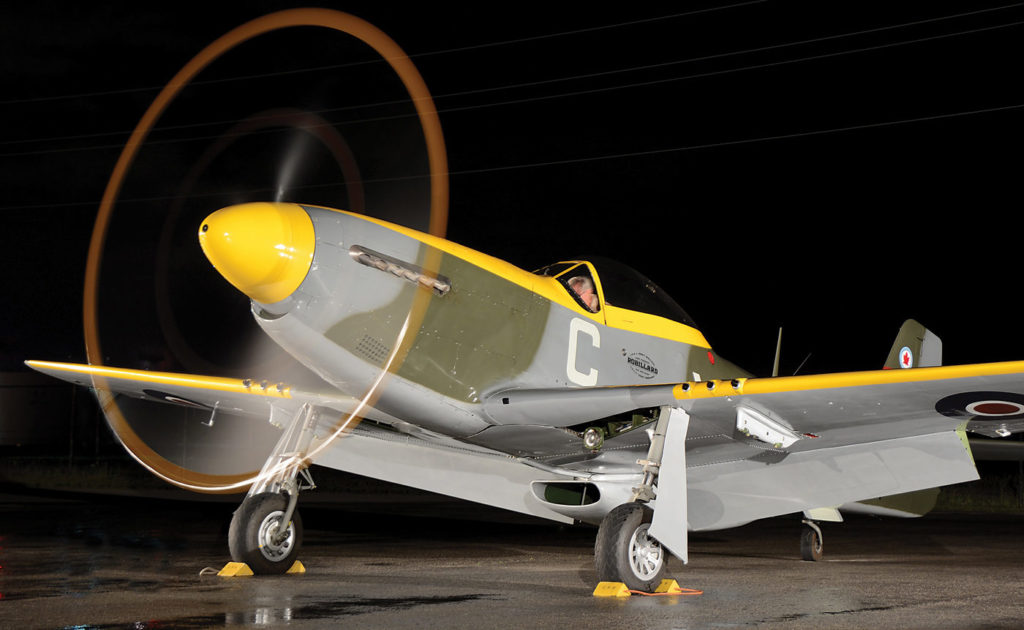
That was Ottawa businessman Michael Potter’s line of thinking in 1995, after he retired from a successful software career and began considering what to do next.
Fast forward to 2017 and there’s no doubt that as the founder of Vintage Wings of Canada, Potter has made a lasting contributing to Canadian aviation history with his collection of rare, lovingly restored classic airplanes–each and every one boasting a strong connection to Canada’s aviation past.
From his first acquisitions in 2000–a Beech Staggerwing and a Supermarine Spitfire–Potter, now 73, had a healthy appreciation for old planes. But it took an event in the summer of 2001 to really emphasize how much emotion they could evoke.
“I painted the Spitfire in Canadian camouflage livery,” he recalled. “I went to a guy who was a modeller who had huge knowledge of the history of the airplane, and we mapped out a paint scheme that represented the livery of a Canadian squadron that flew that plane. I arranged with the Rockcliffe [aviation] museum to basically borrow their site and invited people to a display and a talk about the airplane.”
With some advance press, the event attracted close to 3,000 people. Emotions ran high, with former fighter pilots sharing their memories with the crowd.
“We did a few passes with the plane and then taxied up where people could have a close look at it,” continued Potter. “We got some of the [veteran] pilots into the airplane; there were a couple of guys we helped out of wheelchairs and into the cockpit. There were more than a couple of them who had flown those in combat and were sitting in the plane for the first time in 60 years.”
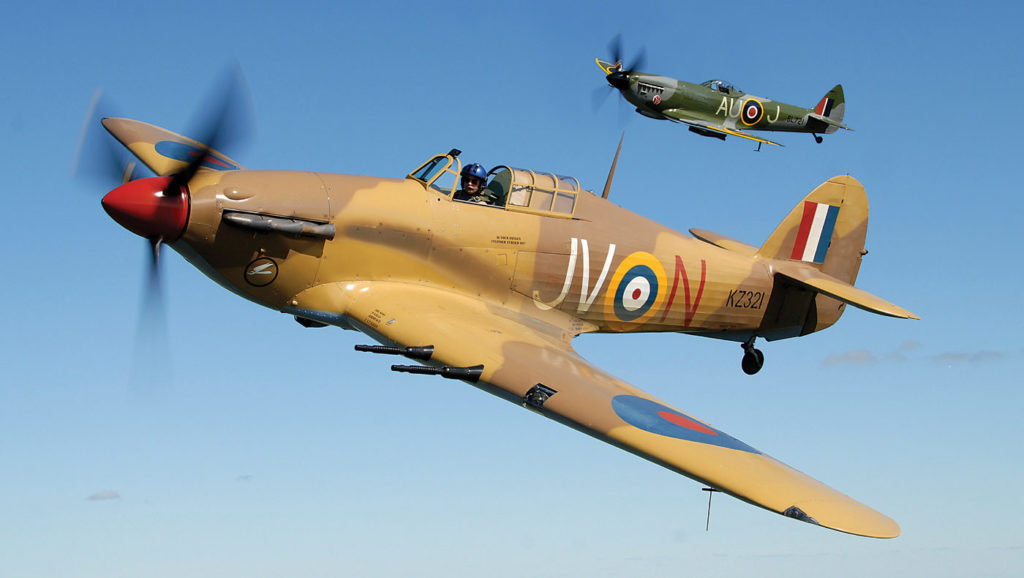
It was the reaction to the Spitfire that made Potter realize the crucial role vintage aircraft play in keeping Canadian aviation history alive.
“I decided at that point to build a collection of airplanes that were important to Canada’s military history,” he told RCAF Today. “I’m not totally altruistic–I just love the airplanes. What they mean to other people is just one more reason to buy more of these planes and not just hide them away, but feel good about what they mean to other people.”
A collector is born
Unlike many present-day aviation aficionados, Potter didn’t spend his childhood building model airplanes or plane spotting at the closest airport. Born in England, he moved to British Columbia when he was seven years old and later joined the Royal Canadian Navy after high school. He subsequently graduated from Royal Military College in 1966 and then the University of British Columbia in 1967.
It’s been 50 years since Potter–in search of a little excitement–took his first flight at the local gliding club.
“I wanted a little adventure; I guess I got hooked on it very quickly,” he said. “I was motivated and got a power licence mainly to tow gliders.”
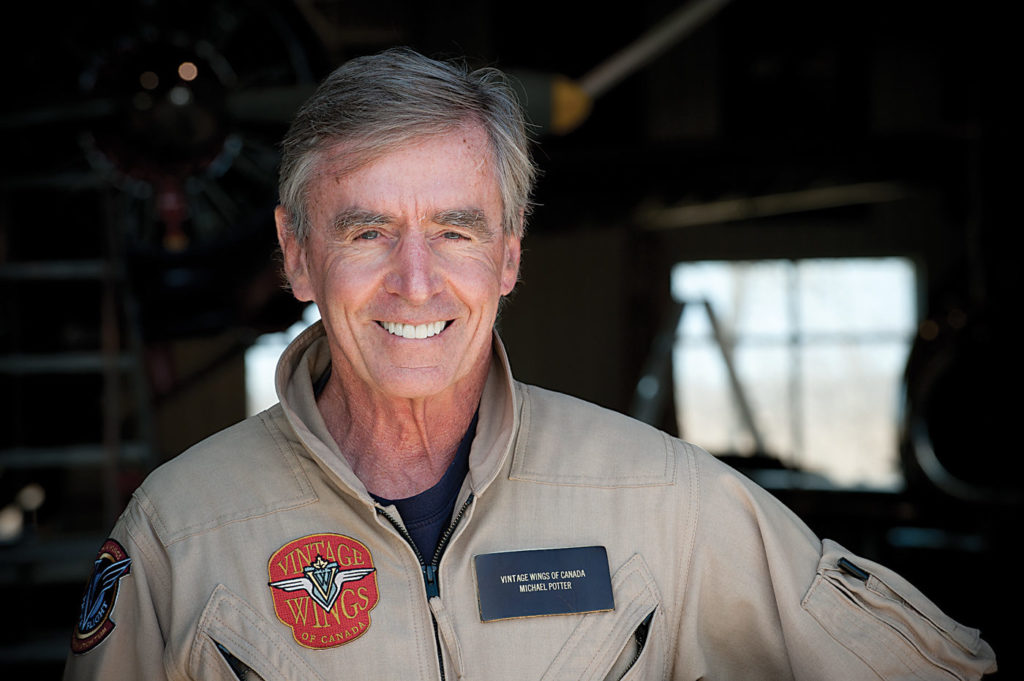
While he initially flew for fun, Potter later built up his experience flying for business in various personal corporate aircraft, including a Piper Malibu, Piper Cheyenne II, Cessna Conquest II and Dassault Falcon 200. In total, he has accumulated over 7,000 flying hours in business and vintage aircraft combined.
Following his retirement, Potter embarked on an ambitious plan to gather a collection of vintage aircraft. To house the planes, he built a custom 23,000-square-foot hangar and maintenance facility at the Gatineau-Ottawa Executive Airport.
“All of that together took the shape of Vintage Wings around 2004, while most of the aircraft acquisitions took place between 2000 and 2008,” said Potter.
“I wasn’t so budget constrained so I was able to search out airplanes that were really quite valuable–the Mustang, Hurricane, Corsair, P-40. We got some very rare airplanes like the Swordfish and Lysander, and trainers like the Tiger Moth, Fleet Finch and Harvard,” he continued, adding that the collection also includes a de Havilland DHC-2 Beaver which, although not known as a Canadian military aircraft, is nonetheless a crucial piece of Canadian aviation history.
Today, Potter’s irreplaceable collection includes 15 aircraft plus three more that he doesn’t own, but invited into the Vintage Wings hangar. Visitors will see a Spitfire Mk XVI, Spitfire Mk IX, Hurricane Mk IV, Hurricane Mk XII, FG-1D Corsair, P-40N Kittyhawk, P-51D Mustang, Harvard IV, Fleet Finch, Fairchild Cornell, DHC-2 Beaver, Fairey Swordfish III, Westland Lysander, F-86 Sabre, DH-83 Fox Moth, DHC-1 Chipmunk, Hawker Fury, and Extra 330LT. The collection also includes a Spitfire Mk XIV project that is for sale. Aircraft previously held by the collection include a Beech Staggerwing, Waco Taperwing ATO, DH-82 Tiger Moth, and a Boeing Stearman.
Volunteer roots
When it first opened its doors in 2004, Vintage Wings was essentially a volunteer-driven private foundation.

In its first year of operation the group hosted two open houses; the next summer there were four. Then they decided to have an airshow. Eventually, volunteers were trying to uphold a complex agenda of events and programs. The spending far outstripped the income.
At that point, Potter–a businessman at heart–decided to create a registered charitable organization under a single independent board of directors that would oversee the collection, the hangar and events, public outreach, and the annual airshow.
“We wanted as much volunteerism as possible but at the end of the day, it would be a professionally staffed organization that managed restoration, aircraft maintenance, the facility, flight displays and events, etc.,” said Potter.
Dave O’Malley, whose involvement with the organization goes back to the early 2000s, has been both a volunteer and a staff member at Vintage Wings. As the president of Aerographics Creative Services, O’Malley has been the driving force behind communications and branding initiatives for the vintage aircraft collection.
“I was happily sucked into the vortex,” he laughed, reminiscing about the early days when plans for the collection were just coming together. “By the time the doors opened up, Mike had the Taperwing, Staggerwing, Beaver, Spitfire, Mustang, Harvard, Tiger Moth …. and then it just wound up,” recalled O’Malley. “He started collecting these airplanes because he loved them.”
O’Malley, too, recalled the financial challenges experienced along the way.
“The idea right from the beginning was to make it self-sustaining eventually,” he said. “But the organization had a heavy cost. There was so much overhead and we never got close to being self-sustaining.”

With Vintage Wings managing the restorations, aircraft maintenance, and all of the myriad bits and pieces required in terms of regulation, plus running major events, galas and airshows, O’Malley admitted: “It required so many people, but we could never generate enough money. Mike was always backfilling it.”
Groundswell of support
In late 2016, Vintage Wings’ board of directors decided the status quo was not financially viable and Potter elected to privatize the collection once again.
“I’ve been saying for years that it had to be more independent,” he said. “But once the Vintage Wings board concluded it was not viable I decided to pursue the same mission as a private collection, on display and accessible to the public.”
The education and public outreach functions returned to their volunteer roots and this has created clarity within the organization. Other than a paid receptionist, it’s once again a volunteer-driven enterprise from top to bottom.
Those who want to help are pitching in to organize various events. For example, this year will see them revive a scaled back version of the Yellow Wings program, an initiative that introduces young air cadets to the priceless aircraft in Michael Potter’s collection.
“I told them, ‘If you still want visitors in the hangar, if you still want fly-in breakfasts and airshows, my doors are open. I’ll support that in any way I can.’ And there was just a groundswell of support,” said Potter.
“Now they’re not worried about restoration, maintenance or flight operations. They’re worried about hosting events that will draw people who are interested in the collection and the museum.”

Essentially, the recent changes have seen three separate entities coming together under the Vintage Wings brand: The airplanes, known as the Michael Potter Collection; Vintech Aero, the onsite restoration and maintenance provider that employs a paid staff; and Vintage Wings of Canada, the volunteer-driven organization that aims to showcase the aircraft. There is also a separate group that has formed to organize airshows, such as the Aero 150 event held on April 30.
In total, Potter said there are more than 100 volunteers powering Vintage Wings. He believes a renewed sense of energy has permeated the hangar since the restructuring.
“Both in terms of the flight program and the public outreach for 2017, both sides will be more active than the past year or two,” said Potter. “The new model seems to be so much more appropriate for what we’re trying to achieve and it makes my life easier. Frankly, that hangar and the collection and the restoration work involves some big dollars. As a business guy, I like to feel they’re being managed efficiently and effectively.”
He added that he’s used the term “taking ownership” repeatedly to describe the changing role of the Vintage Wings volunteer.
“I have made it clear that I will take care of the hangar, the collection, and the operations of the aircraft–and doing that gives me enough on my hands–but reaching out to the public, bringing visitors and school groups into the hangar, and putting on events is under the full ownership of volunteers.”
O’Malley said Vintage Wings volunteers are enthusiastic about the changes.
“This is the right way to go. The volunteers used to wait for the message [to come from] on high about what they’d be doing. Now, they’re all stepping up and taking initiative and owning their projects,” he said. “Mike wants this thing to stand on its own and at some point it’s got to learn to do that. I think this is the way–this is how we started.”
Exciting times
As Vintage Wings completes its reorganization, the summer of 2017 looms large.

O’Malley said the biggest event of the season was the Aero 150 airshow on April 30 featuring the Snowbirds and La Patrouille de France.
“That show was a tremendous opportunity; they performed along with the Snowbirds,” he said at the time. “The Air Force also sent some other assets to fly. We flew our airplanes as well.”
O’Malley added that despite rain, ice pellets and just-above-zero temperatures, about 10,000 people attended the free one-day event. The City of Gatineau, the RCAF, and Michael Potter were all key sponsors.
In addition to the airshow, Vintage Wings volunteers are filling the calendar with a number of other engagements. So far, the list includes a Seat Check Saturday (where people can pay a fee to sit for five minutes in the cockpits of five different aircraft–“It’s like speed dating with history,” said O’Malley); a fly-in breakfast, which took place on June 17; numerous airshow appearances of the Second World War fighters in the collection, and several Yellow Wings initiatives to reach out to air cadets.
“From the volunteer side, we’re all really excited and engaged like we’ve never been before,” O’Malley enthused. “This is kind of where we started, with the Michael Potter Collection, a bunch of mechanics, a hangar, and a bunch of people wondering what we should do with it all.”
Although a date hasn’t been set, there is another long-awaited event that is expected to take place this summer–the first flight of Vintage Wings’ Supermarine Spitfire Mk IX, RAF serial number TE294.
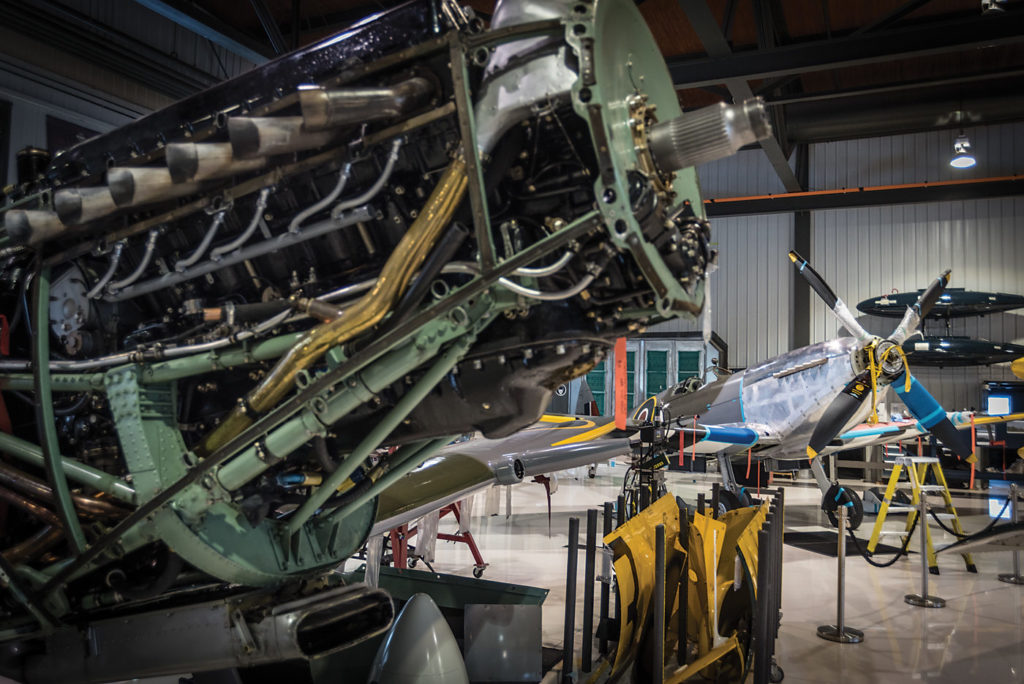
Rescued from a scrap heap in South Africa in the 1990s, the fighter’s fuselage was transported to Comox, B.C., where a group of volunteers took on the task of restoring her as a millennium project. By 2007, the group realized a new source of funding was needed to see the project through to completion. The plane was offered to other museums and agencies and Michael Potter stepped forward to provide the considerable financing required to return TE294 to the skies.
A crew from Vintech Aero proceeded to build the fuselage in Comox while the wings were constructed in Gatineau, from scratch, under the direction of project supervisor Ken Wood. The pieces came together in the Vintage Wings hangar and all that remains to be done is some final testing.
A mammoth undertaking, TE294 is “the most beautiful Spitfire on the planet,” according to Potter. “Nearly all of it is made by our guys. There were 22,000 Spitfires built, all of them in the U.K. There have been many restorations but this is the first time a full build has been done in Canada.”
The Spitfire will be dedicated to the memory of Flight Lieutenant Arnold “Rosey” Roseland of 442 Squadron, one of very few Canadian fighter pilots who fought both the Japanese and the Germans during the Second World War. With a reported 117 flights in the Spitfire totaling 130 hours and 10 minutes, Roseland is a Canadian hero.
“We’re planning to do something really special,” said O’Malley of the Roseland Spitfire unveiling. “It’s been a long program for sure, but this summer it’s going to fly. Not only is it the first Spitfire built from scratch in Canada, but the first in North America–it was built from the data plates upwards. It’s a spectacular project. It’s just beautifully done.”
Recreating history
There’s no doubt that Michael Potter has made a huge contribution to preserving and recreating Canada’s aviation history. But what does the collection mean to him personally?
“I think there are three things to mention,” he told RCAF Today. “I’ve found the personal challenge of flying those airplanes very rewarding. I have a great attraction to flying the planes.
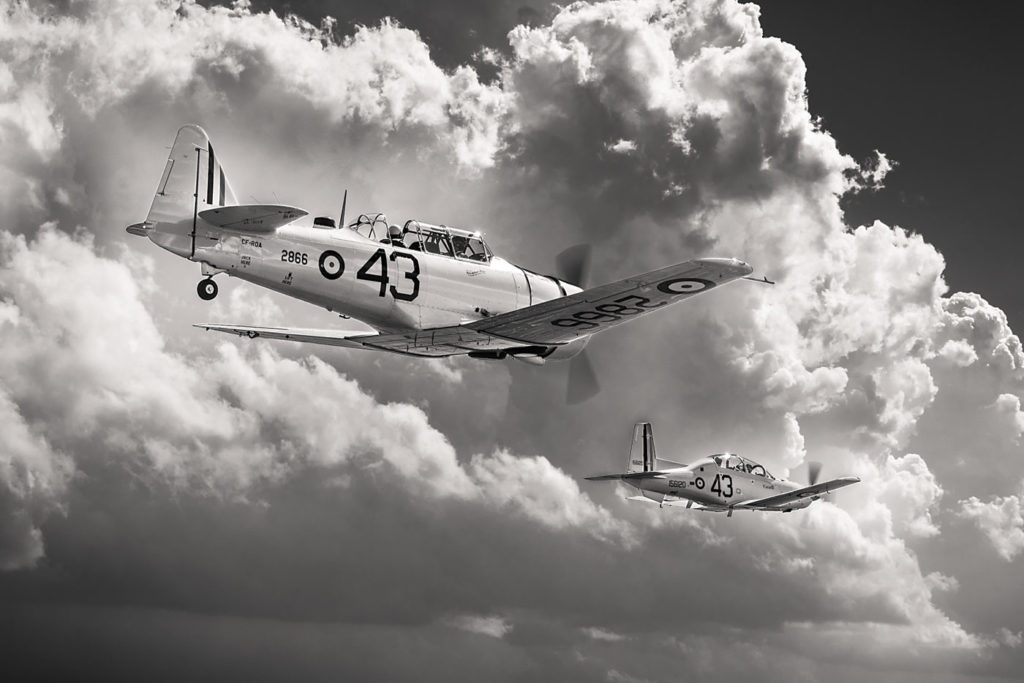
“Secondly, I just love the restoration work. I was in the software business; it’s abstract, you can’t touch it. But there’s a great attraction to going into the hangar and talking to real people who spend their careers dealing and working on things that are tangible. It’s a wonderful place to hang out.
“I also have to add that the creation of this has been a business challenge, so it links to my first career.”
Potter is quick to recognize the pilots, maintenance engineers and volunteers who together form the backbone of Vintage Wings.
O’Malley agreed. “The best thing about Vintage Wings is the people. We have the best of the best,” he said. “When we were running full out about four years ago, the group was really talented. It was so much fun and it’s great to see them all here today, fully energized under the new organizational model.”
Potter’s dream for Vintage Wings is that one day it will see the same kind of visitor traffic as Hamilton’s Canadian Warplane Heritage Museum.
“There are a lot of people here in the National Capital Region who don’t know about what we have here in Gatineau and how unique it is with our focus on Second World War fighters,” he concluded. “There’s a real opportunity for Vintage Wings to expand both their ground-based educational events and the flight program as well. My dreams are for them to be three or four times the size they are now.”
Lisa Gordon is editor-in-chief of Skies and RCAF Today magazines. Prior to joining MHM Publishing in 2011, Lisa worked in association publishing for more than a decade, overseeing the production of custom-crafted trade magazines. Lisa is a graduate of the Ryerson University Journalism program.
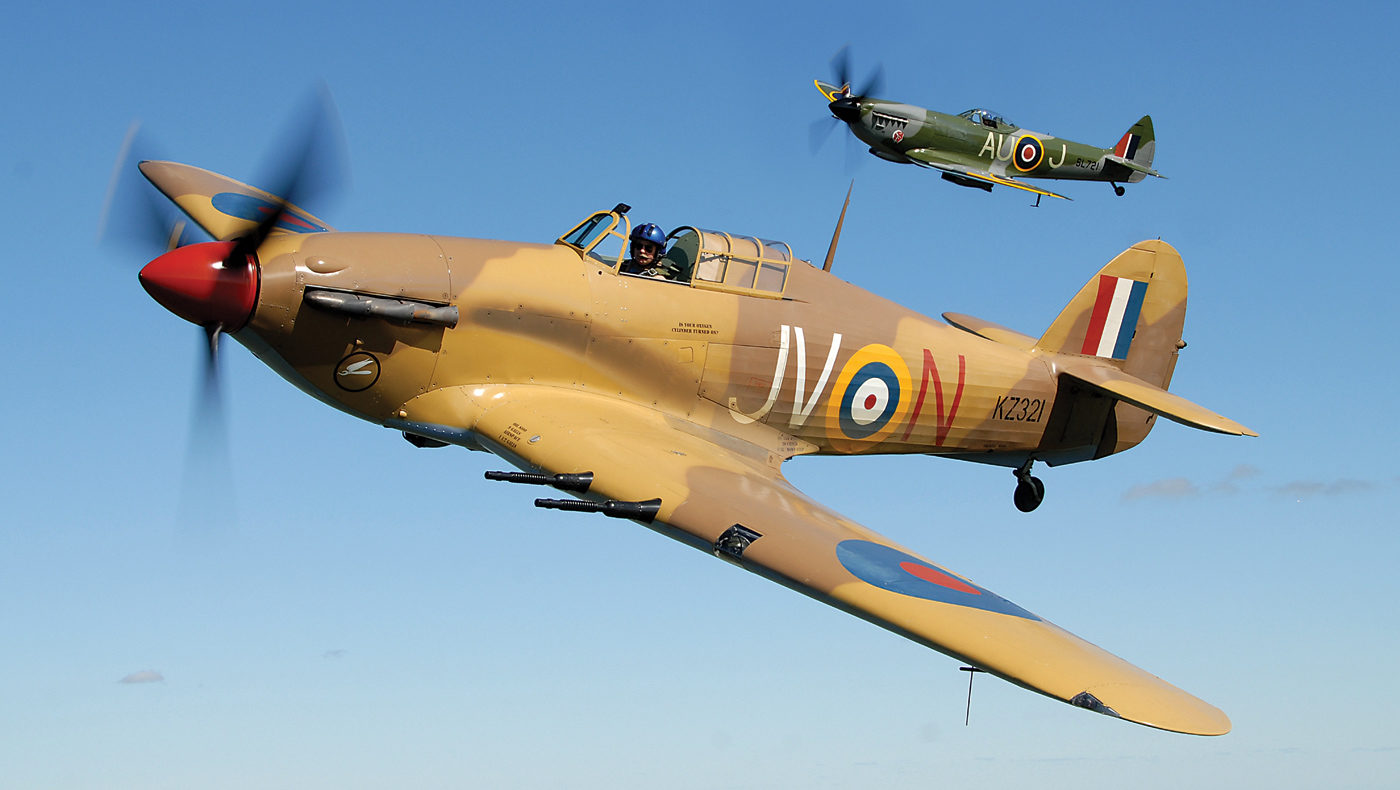

Well Done Mike. Your passion and support for our aviation history is an example to us all. You and I started from the same roots, I came to Canada as a 9 year old when my parents emigrated from Scotland. I was struck with bug also after a long cross Atlantic flight in a Super Connie which prompted me to get my license also.
Of note, we need to get your support staff into something much more complimentary to your Organization. A well made-in-Canada flight suit is a must. Call me when able, best regards, Brian R. Mellis, President, Flightline Aviation Wear.
Hello
My brother is a pilot and I am looking for a old used connecting rod and piston or one of the other from any aircraft to put together as a lamp and was wondering if you would have one I may purchase or if you know were I could get one
Best regards
Peter
Sorry Peter, we are not sure where you might find this item. Have you tried contacting an aircraft maintenance operation at your local airport to ask them for ideas?